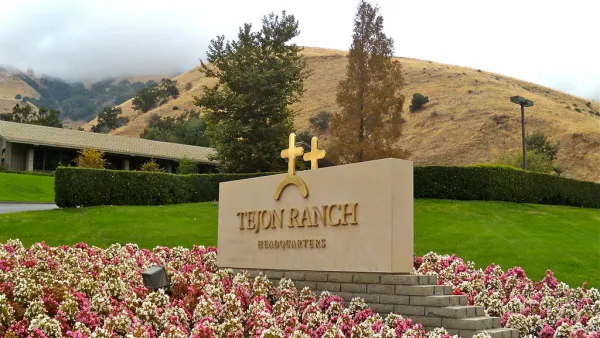The surge in oil production has not benefited California, but that's about to change. Shale oil from North Dakota and other states costs $15 less than imported oil. After transportation costs, California refineries would save $3 per barrel.
"For the past decade, the U.S. shale boom has mostly passed by California, forcing oil refiners in the state to import expensive crude," write Alison Sider and Cassandra Sweet of The Wall Street Journal.
“California refineries arguably have the most expensive crude slate in North America,” says David Hackett, president of energy consulting firm Stillwater Associates.
What's holding up crude-by-rail is a lack of "terminals to unload the oil from tanker cars and transfer it to refineries on site or by pipeline or truck," write Sider and Sweet. However, that's about to change, they write.
- Kern County officials last month gave Alon USA Energy Inc. permission to build the state’s biggest oil-train terminal. That project, which the company hopes to finish next year, is designed to receive 150,000 barrels of oil a day in Bakersfield, Calif., 110 miles north of Los Angeles.
- Plains All American Pipeline LP says it plans to open a 70,000-barrel-a-day oil-train terminal in Bakersfield this month.
- And in northern California, a judge last month dismissed a lawsuit brought by environmental groups that challenged Kinder Morgan Inc.’s rail permits. The company is now receiving oil trains at a Richmond, California, terminal near San Francisco that was built to handle ethanol.
However, the state's lengthy permitting process has taken its toll on the energy companies. "Valero Energy Corp. in March canceled plans to build an oil-train terminal near its Los Angeles refinery. But Valero still hopes to add a terminal to the company’s Benicia, Calif., plant, 35 miles northeast of San Francisco," write Sider and Sweet
Also in the Bay Area, an oil-train terminal in Pittsburg "is on hold after the state attorney general asked for an expanded environmental review," they add.
Finally, the writers point to an indirect means for the state to receiver the cheaper oil from the Midwest—by rail and then barge via Vancouver, Washington.
Even if oil trains are kept off California tracks, more fracked crude still could flow to California. A 360,000-barrel-a-day oil-train terminal in Vancouver, Wash., aims to transfer North Dakota crude from tanker cars to barges that will sail the Columbia River about 100 miles northwest to the Pacific Ocean. From there, it is a quick trip down the coast to California ports.
However, Seattle Post-Intelligencer blogger Joel Connelly writes that Gov. Jay Inslee has yet to approve the controversial project.
The terminal proposal is due to undergo a thorough environmental review by the state Energy Facility Siting Evaluation Council. The final decision on the project is likely to rest with Washington’s “green” Governor Jay Inslee.
Correspondent's note: Wall Street Journal subscriber-only content will be available to non-subscribers for up to seven days after October 8.
FULL STORY: California Finally to Reap Fracking's Riches

National Parks Layoffs Will Cause Communities to Lose Billions
Thousands of essential park workers were laid off this week, just before the busy spring break season.

Retro-silient?: America’s First “Eco-burb,” The Woodlands Turns 50
A master-planned community north of Houston offers lessons on green infrastructure and resilient design, but falls short of its founder’s lofty affordability and walkability goals.

Delivering for America Plan Will Downgrade Mail Service in at Least 49.5 Percent of Zip Codes
Republican and Democrat lawmakers criticize the plan for its disproportionate negative impact on rural communities.

Test News Post 1
This is a summary

Test News Headline 46
Test for the image on the front page.

Balancing Bombs and Butterflies: How the National Guard Protects a Rare Species
The National Guard at Fort Indiantown Gap uses GIS technology and land management strategies to balance military training with conservation efforts, ensuring the survival of the rare eastern regal fritillary butterfly.
Urban Design for Planners 1: Software Tools
This six-course series explores essential urban design concepts using open source software and equips planners with the tools they need to participate fully in the urban design process.
Planning for Universal Design
Learn the tools for implementing Universal Design in planning regulations.
EMC Planning Group, Inc.
Planetizen
Planetizen
Mpact (formerly Rail~Volution)
Great Falls Development Authority, Inc.
HUDs Office of Policy Development and Research
NYU Wagner Graduate School of Public Service



























